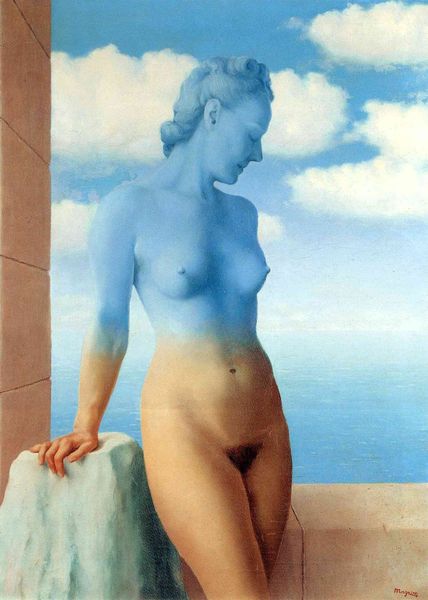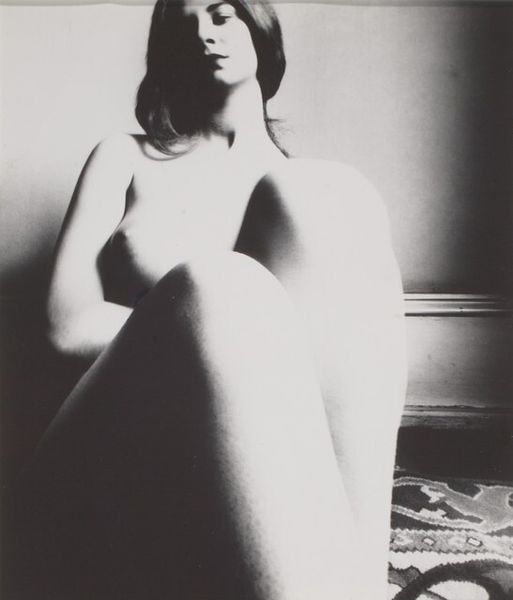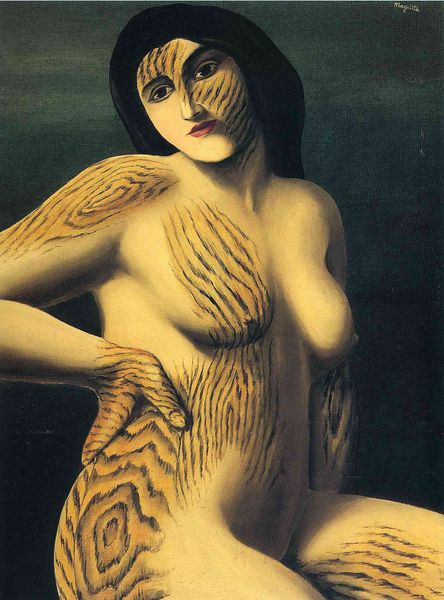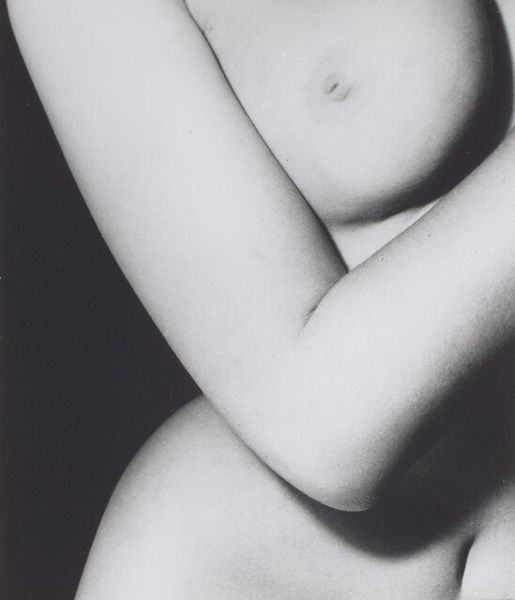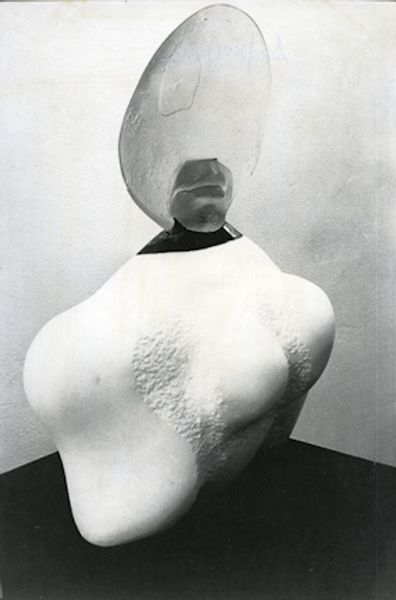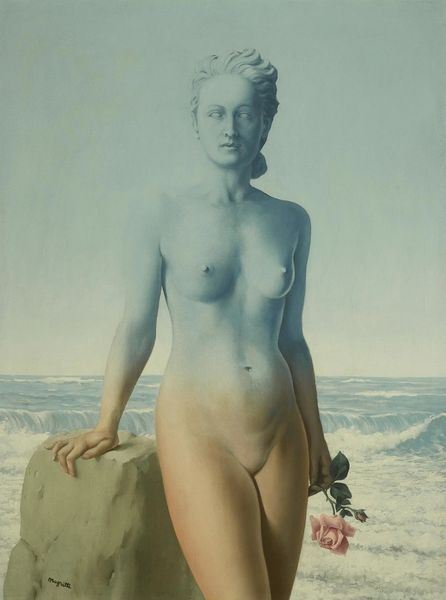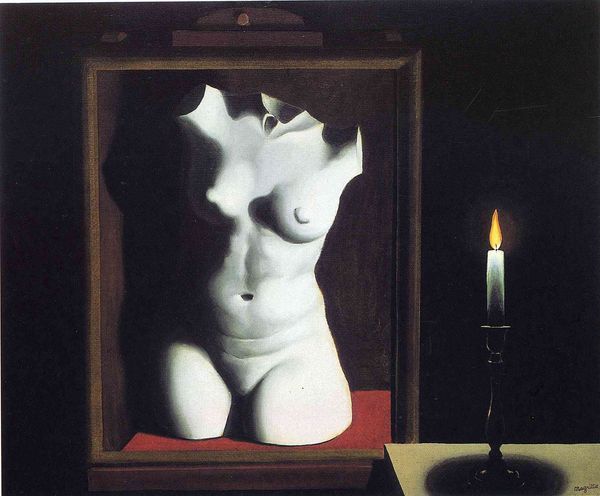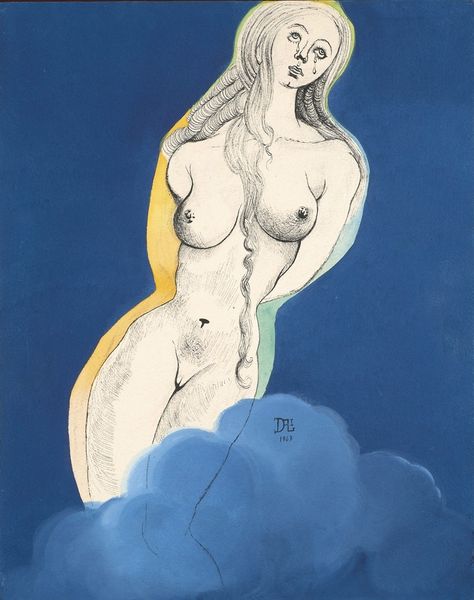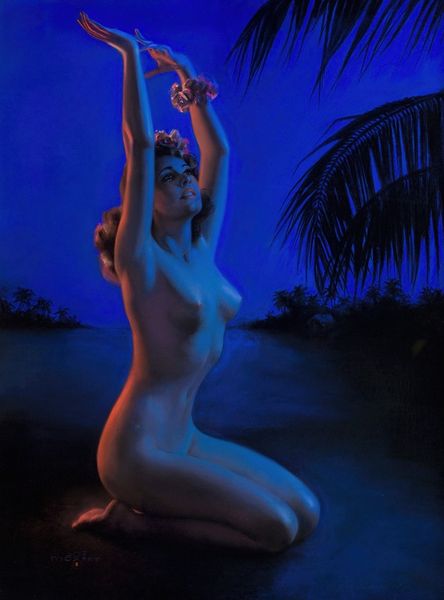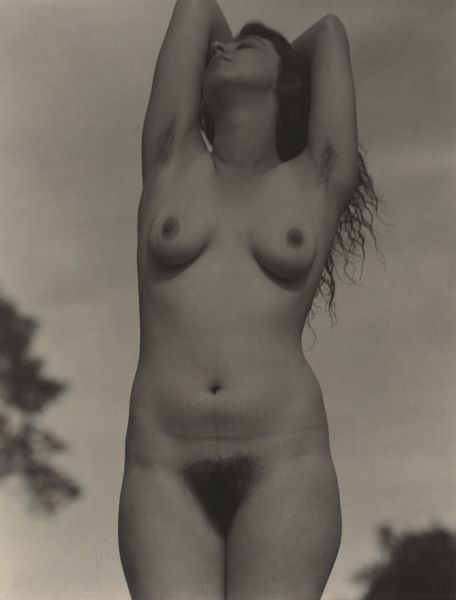
Copyright: Rene Magritte,Fair Use
Curator: Let’s delve into René Magritte’s "Black Magic," created in 1934 using oil paint. It presents an intriguing composition that's ripe for analysis. What are your initial thoughts? Editor: My immediate reaction is the texture. I'm curious about the brushstrokes—the smoothness of the skin in contrast to the implied roughness of the stone cliff. It's all so precisely rendered. Curator: That juxtaposition is key. This artwork sits at the intersection of Romanticism and Surrealism. The nude figure, classical in form yet imbued with a strange blue hue on her upper body, becomes a focal point for discussions on beauty, idealization, and representation. How do you think her physicality plays into societal narratives around female form? Editor: Well, I notice how the two-toned execution separates her from the scene, suggesting artifice rather than nature. Her lower half returns to naturalistic depiction. And the whiteness of the bird amplifies that construction by further materializing it. Is it really meant to be "magic" at all? Curator: Perhaps it speaks to a transformative power within the feminine, echoing similar explorations of the feminine mystique found in the works of his Surrealist contemporaries. I mean, look how that darkness frames the figure almost architecturally. Is she being imprisoned or protected by the social expectations? Editor: I understand the gendered readings here. Still, for me, it’s also about how he, as a painter, literally manipulated layers of paint, building up depth but flattening other elements. Look how he highlights craft itself, exposing a constructed, almost factory-produced ideal of the romantic landscape with his application techniques. Curator: And we see it framed now within new power structures. Examining Magritte's choices today demands that we address gender dynamics and gaze as relevant layers of interpretation, right? Editor: Definitely. Considering materials, how Magritte handles paint itself and the subjects it allows him to portray offers insights into broader socioeconomic frameworks and systems of material exchange back then. It's a continuous loop that deepens the layers within painting's role itself. Curator: Ultimately, the canvas beckons, reminding us of the continuous reassessment vital for unlocking meanings of this enigmatic visual. Editor: Right, and highlighting Magritte’s mastery—he crafted with oil to provoke lasting reflections beyond its material form.
Comments
No comments
Be the first to comment and join the conversation on the ultimate creative platform.




